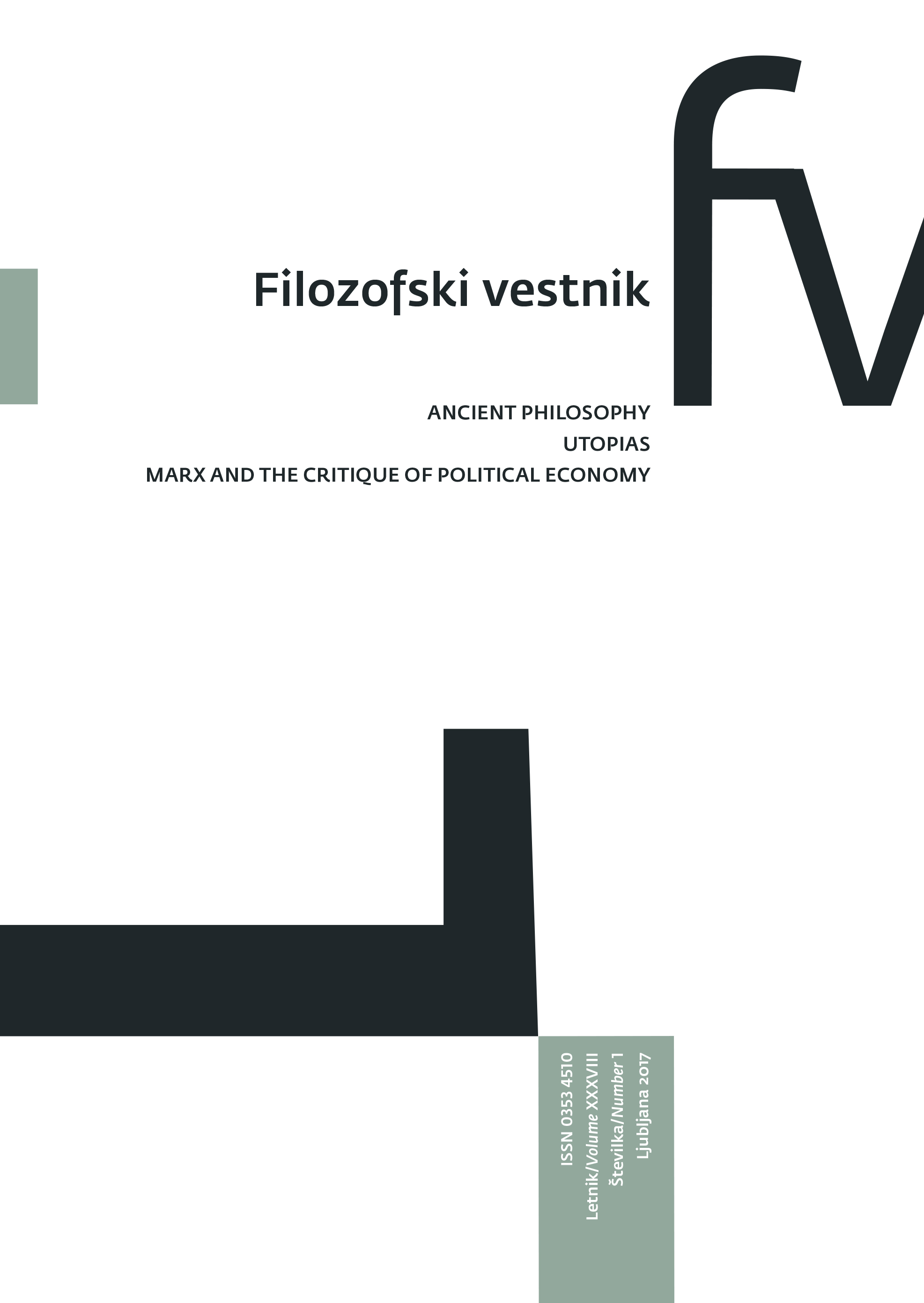Kartiranje tistega, česar ni mogoče kartirati: dihotomije utopianizma
Ključne besede:
utopija, distopija, utopianizem, eskapizem, ikonoklazem, Thomas More, Theodor W. AdornoPovzetek
Enega izmed največjih izzivov sodobnega utopianizma predstavlja protislovje med pozitivno usmerjenostjo v prihodnost (interpretirano v izrazih upanja) in njenimi negativnimi reprezentacijami (v smislu strahu). V nasprotju s prevladujočimi pristopi, ki so usmerjeni k širokim in vseobsegajočim opisom utopije na podlagi nekega koncepta, avtor pričujočega prispevka zagovarja prepričanje, da obstaja ustreznejši način dojemanja utopije in utopianizma, ki napreduje prek vrste dihotomij, nasprotij ali celo paradoksov. Od zgodnjih utopičnih strategij, katerim lahko sledimo več tisočletij v preteklost, do primerov iz dvajsetega in enaindvajsetega stoletja, je utopija vedno izražala nasprotujoče si težnje, ki zahtevajo temeljitejšo obravnavo. Lahko si je namreč zamisliti, da v tej kontradiktorni naravi utopije leži ne samo ključ do razumevanja preteklosti in sedanjosti, temveč tudi prihodnosti. V tem kontekstu se kot najpomembnejša kaže razlika med »resnično« (ali ikonoklastično) utopijo in »lažno« utopijo (temelječo na natančnem načrtovanju). Kljub temu, da se je v dvajsetem stoletju utopično upanje sprevrnilo v distopični strah, pot k drugačni in po možnosti boljši prihodnosti ponuja le »resnična«, ikonoklastična utopija, ki ohranja pri življenju bržkone najpomembnejši vidik človeške eksistence: upanje.
Prenosi
Prenosi
Objavljeno
Kako citirati
Številka
Rubrike
Licenca
Avtorji jamčijo, da je delo njihova avtorska stvaritev, da v njem niso kršene avtorske pravice tretjih oseb ali kake druge pravice. V primeru zahtevkov tretjih oseb se avtorji zavezujejo, da bodo varovali interese založnika ter da bodo povrnili morebitno škodo.
Podrobneje v rubriki: Prispevki





